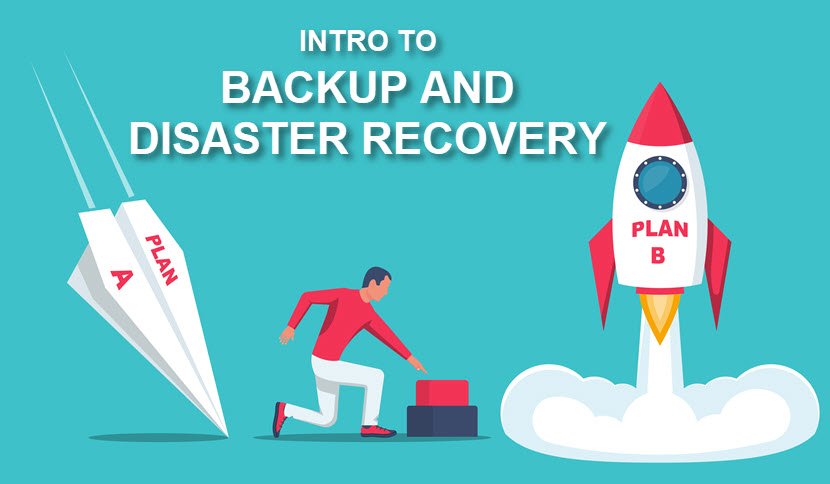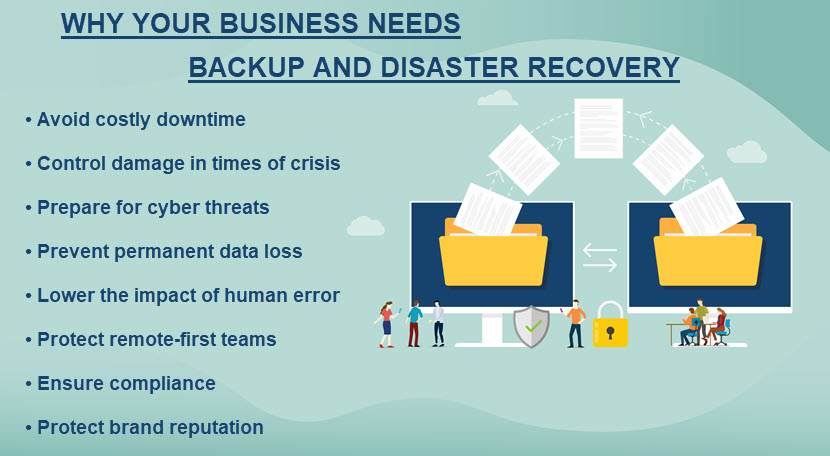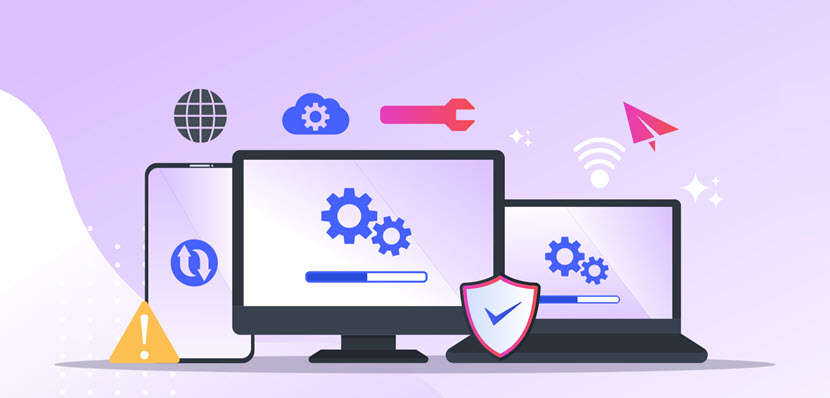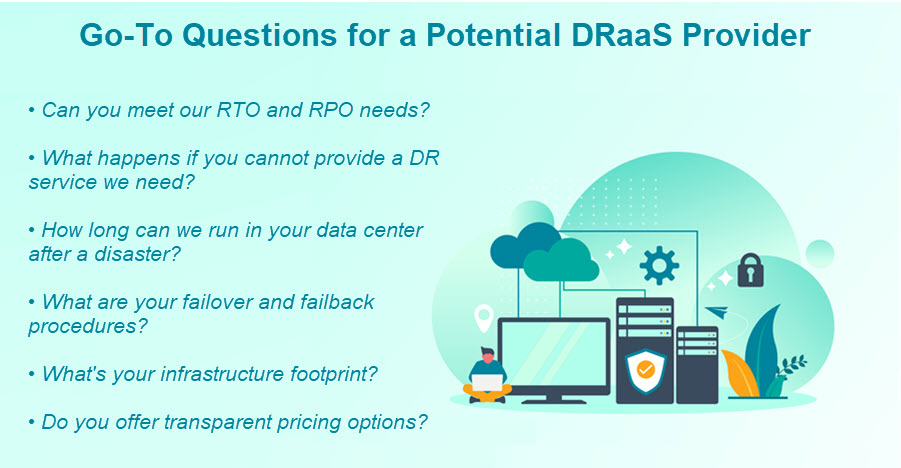Backup and Disaster Recovery (BDR) Guide
A vital (yet often overlooked) aspect of building a successful company is preparing for potential disruptions. Backup and disaster recovery (DR) help deal with incidents that disrupt operations, so the two practices are crucial to business continuity. Without backups and DR, events such as data breaches and power outages can lead to permanent data loss, reputation hits, and loss of revenue.
This article is an intro to backup and disaster recovery (BDR), two related practices that help businesses respond to and overcome unfortunate events. We outline what your company stands to get from BDR and provide all the resources you need to start developing an effective business continuity strategy.

What are Backup and Disaster Recovery?
A backup is a copy of data you can use to restore a file if something happens to the original. Creating a data backup protects against most incidents that jeopardize data integrity and safety, such as:
- Accidental deletion or failure to save progress.
- Losing a device with a valuable file.
- A software bug.
- An infrastructure or service-based issue.
- Data theft (either by an external or insider actor).
- Database corruption.
- Faulty patching.
- A crashed hard drive.
On the other hand, disaster recovery is a step-by-step plan for quickly regaining the use of apps and IT resources after an incident. Companies create a DR plan for two types of incidents:
- Natural disasters that cause physical damage and disrupt power grids (earthquakes, tornadoes, floods, wildfires, tsunamis, etc.).
- Man-made disasters, which can either be intentional (malware, theft, sabotage, a terrorist attack, hacks that disrupt a power grid, etc.) or unintentional (accidental explosion, system failure, app bug, etc.).
A DR plan typically requires a second set of servers and storage systems (either in-house or rented) that you can use if something or someone takes out the primary IT setup.
While the two are different practices, there is a lot of overlap between backup and disaster recovery. Most DR plans rely on some form of backup. However, backups alone are not enough to ensure business continuity. Only a robust DR strategy can guarantee your company can continue operating in case of a disaster.
PhoenixNAP offers state-of-the-art yet highly affordable backup services and disaster recovery solutions that help protect data and critical operations from unplanned disruptions.
Why Do We Need Backup and Disaster Recovery?
Let us look at the main reasons businesses of all sizes decide to invest in backup and disaster recovery.

The Cost of Downtime is Too Great
Downtime happens when apps and data become unavailable to end-users (e.g., because of a natural disaster or DDoS attack). When you suffer downtime, the effects echo throughout the entire company:
- Employees cannot do their jobs.
- Transactions do not go through.
- Customers turn to competitors.
- Business revenue comes to a halt.
Here are some facts and numbers that clearly show the importance of avoiding downtime:
- Around 66% of companies report that unplanned downtime hinders their digital transformation.
- For a small business, the per-event cost of downtime sits between $82,000 and $256,000.
- The cost of IT network downtime currently averages at $300,000 per hour ($5,600 per minute).
- The average price of downtime is becoming more expensive each year by 36%.
Disaster recovery planning is the recipe for preventing high amounts of unplanned downtime. The ability to switch operations to a secondary set of IT resources means you can keep services online during a disaster and avoid downtime even if the primary data center is down.
Your data center's tier level also impacts how much downtime you can realistically expect to face. Our article on data center tiers compares different facility types and shows what they offer in terms of uptime guarantees.
Avoiding Permanent Data Loss
If someone or something deletes a file that has no backup, that data is gone forever. Unfortunately, there are many ways you can lose a piece of data, such as:
- Accidental or malicious deletion.
- Hardware failure.
- Cyberattack.
- Data corruption.
- Physical damage to a storage unit.
A proper data backup enables you to return the file to the last known good point in time before the problem. The strategy does not protect data from theft but guarantees that you never lose a valuable file permanently.
Damage Control in Times of Crisis
Unfortunate events always cause damage, but backup and disaster recovery enable a company to control the extent of the damage. Here are a few examples:
- If you fire someone and the angry employee decides to delete files out of spite, a backup enables you to restore any data deleted by the ex-worker.
- A backup failover site in a different region can keep you operational if the primary data center is in the midst of a region-wide power outage.
- If you lose some of your infrastructure in a fire, you can restore all data on lost devices from a cloud backup.
- A DR plan to move all equipment off the floor and into a windowless room can save the entire IT setup in a hurricane scenario.
- When an intruder makes their way into your network, a disaster recovery plan ensures a swift response that limits lateral movement and controls the blast radius.
- If you suffer a ransomware attack, a proper DR plan helps stop the attacker from spreading to new devices, while backups ensure you can restore encrypted data.
Ransomware is among the most dangerous attacks your business can face. Learn how to prevent ransomware and read about 18 easy-to-implement strategies for countering this cyber threat.
Protecting Your Brand's Reputation
Being known as a company that lost customer data in the past does no favors to your business. Once you lose the trust of current customers, they start to discourage others from using or working for your company.
Unhappy users also leave negative comments about your business online, giving poor ratings that can hinder customer acquisition for years. Ultimately, you lose revenue simply because you did not have a backup and disaster recovery plan.

Both business continuity and disaster recovery are vital to company safety. Learn more about their differences in our article Business Continuity vs Disaster Recovery.
Cyber Threats Are a Matter of When, Not If
While you should take a proactive approach to cybersecurity with robust firewalls and intrusion detection systems, it is unwise to assume your business is safe. Preparing a response plan for a successful cyberattack is as vital as setting up prevention measures.
Proper DR planning ensures the team knows how to:
- Quickly identify different types of threats.
- Respond promptly and correctly to each threat type.
- Follow through on the process of removing the attacker from the network.
On the other hand, backups mitigate data loss and ensure you can recover from an attack without long-term problems.
Our article on cybersecurity best practices presents 19 actionable tips you can use to improve your company's resilience to cyber threats.
Protecting Your Remote Workforce
While remote work and BYOD have a range of benefits, these strategies also have certain risks:
- The business has limited visibility into how an employee uses and protects the device.
- A personal device typically has weak security and easy-to-crack passwords.
- Out-of-office work means more chances for someone to steal or lose a device with access to sensitive data.
- A home network is typically far less secure than its corporate counterpart.
- An employee also uses a BYOD device for personal reasons, creating a broader attack surface.
Remote work and BYOD devices can easily lead to permanent data loss without a proper backup. Likewise, a DR plan ensures the security team is quick to disable a lost device or wipe the data to prevent an outsider from accessing business info.
Our article on BYOD policies explains how to ensure Bring Your Own Device becomes a competitive edge and not an exploitable weak point in your security strategy.
Lowering the Human Error Factor
Everyone makes mistakes, and your workforce is no different. Employees forget to save changes, type in incorrect dates, accidentally delete files, and press the wrong buttons all the time.
A continuous backup system ensures your workforce does not accidentally lose data. Likewise, a DR plan lowers the chance of costly mistakes during the crucial phases of discovering and responding to a threat.
You Need to Stay Compliant
Some companies must have an always-on infrastructure to comply with government regulations, while others need regular data backups to comply with local laws. In those cases, the lack of backup and disaster recovery plans can lead to severe penalties and legal expenses.
Remember that a business does not get an exception for regulations such as HIPAA and PCI when disaster strikes. You need to maintain compliance even when things get messy. The good news is that you can use backup and DR to ease the compliance burden. Here is how:
- Data backups ensure you do not lose sensitive data due to data leakage or a breach, which is a requirement of most data regulations. You still have to worry about someone stealing files, so consider using at-rest encryption for all sensitive data sets.
- You can tailor your DR plan to ensure emergency response prioritizes securing regulation-tied databases.
- DR planning requires continuous reviewing of IT systems to stay up to date with current threats. Regular reviews mean the team has more chances to spot failures to comply.
When choosing a provider, always look for a vendor with third-party compliance certifications (such as HIPAA, PCI-DSS, GLBA, and SSAE 18).
How Does Backup Differentiate from Disaster Recovery?
Backup and disaster recovery typically work in tandem, but the two are separate practices. The table below offers a high-end comparison of the two strategies:
| Point of comparison | Backup | Disaster recovery |
|---|---|---|
| Practice description | Making a physical or digital copy of a file at a specific point in time | Defining a step-by-step plan for recovering critical services, apps, and systems from an unplanned event |
| Goal | Ensure you cannot permanently lose a piece of data | Ensure the business maintains normal operations in times of crisis |
| Main countered risks | Host failures, small-to-midsize online attacks, accidental data deletion, and basic hardware failures | Region-wide disasters and large-scale cyberattacks |
| Scope | Individual files and virtual machines | Per-department or business-wide level |
| Pricing | Even the best backup options are affordable | Expensive as you need to secure access to a secondary set of IT resources (unless you opt for Disaster-Recovery-as-a-Service) |
The two practices are not mutually exclusive. In fact, one without the other will often result in a failure of both.
Check out our backup vs. disaster recovery article for an in-depth comparison of the two security practices.

What to Look After When Choosing a Backup and DR Provider?
Successful backup and disaster recovery start with making the right vendor choice. Unfortunately, there is no one-size-fits-all provider—while some companies find mega-cloud vendors to be an ideal choice, others benefit the most from a smaller provider with affordable managed services.
Below are five tips that will help you identify a worthwhile partner:
- Find the right backup offering(s): What are you trying to back up? On-prem systems, virtual machines, client OSes, cloud apps, structured data? And what backup frequency do you need (hourly, daily, whenever someone makes an edit, etc.)? Ensure every vendor you consider supports the unique backup needs of your team.
- Consider storage locations: You should not store data backups in areas where a disaster can affect both you and the off-site backup storage. You also do not want backups too far away from the primary data center as great distances can lead to latency issues.
- Closely inspect each candidate: Only consider providers with a proven track record of quality service. Look for customer references and, if possible, talk directly to current clients to learn more about the vendor's operations.
- Take compliance into consideration: Most vendors are compliant with standard privacy and security protections like CCPA and GDPR. However, if you must adhere to some other mandate that involves backups, find a vendor that can help meet those requirements.
- Look for transparent pricing: Some vendors needlessly complicate fee calculation (storage costs, ingress, egress, deletion, retrieval and query fees, various pay-as-you-go models, etc.). Look for a partner that provides a transparent, predictable monthly cost.
Disaster-recovery-as-a-service enables you to rely on a cloud-based infrastructure you can switch IT operations to in times of crisis. This alternative to in-house DR is ideal for companies looking to ensure resilience to disasters without heavy investments in a secondary IT setup.
Hope for the Best, Plan for the Worst
No matter how big or small, every company should have a plan to mitigate the effects of natural disasters, server failures, data breaches, and accidental file deletion. Backup and disaster recovery ensure these events do not have long-term business consequences, so putting these strategies in place should be a priority for any careful organization.